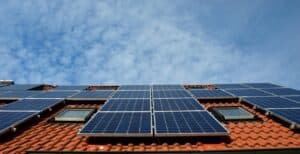Installing a new gas line is a significant undertaking that requires careful planning and consideration.
Whether you’re adding a new appliance, renovating, or upgrading your home, understanding the gas line installation process helps you navigate the project more smoothly. Here’s what you can expect.
Initial Planning and Permits
Before any work begins, planning is key. This phase involves determining the need for a new gas line, identifying the right location, and understanding applicable regulations.
Gas line installations typically require permits, so checking in with your local building authority is essential.
You’ll need to decide on the route for the gas line. This might involve mapping out where the line will run, considering factors like distance from the gas meter and any potential obstacles.
Be sure to discuss your plans with a licensed contractor to ensure compliance with local codes.
Hiring a Qualified Contractor
Choosing the right contractor is crucial. Look for professionals who specialize in gas line installation and have the necessary licenses and insurance.
Ask for references and check reviews to gauge their reliability.
Once you’ve selected a contractor, they will conduct an assessment of your property. This includes checking existing gas lines, appliances, and the overall infrastructure to ensure everything meets safety standards.
Communication is vital during this phase to clarify expectations and any potential challenges that may arise.
Understanding the Installation Process
The actual installation process involves several steps, and knowing them helps set your expectations. Here’s a breakdown:
Excavation
If the gas line needs to run underground, excavation is the first order of business. The contractor will dig a trench that is deep enough to protect the line from damage and freezing.
This step requires careful machinery handling and consideration of underground utilities.
Before digging begins, a utility locator service may be called to mark existing lines. This step helps avoid any accidents that could arise from hitting other utilities.
To avoid hitting existing pipes or wires, consider hiring a new orleans plumber who is familiar with the local infrastructure and can help guide the excavation process.
Laying the Gas Line
Once the trench is prepared, the contractor will lay the new gas line. Typically, durable materials such as polyethylene or steel are used, depending on local regulations and the specifics of the installation.
The contractor will ensure the line is properly fitted and secured at various points to prevent leaks. This involves connecting the line to the gas meter and any new appliances you plan to install.
Testing for Leaks and Pressure
After installation, the line undergoes a thorough testing process. A pressure test is conducted to ensure there are no leaks. This step is non-negotiable, as gas leaks pose serious safety hazards.
The testing process may involve filling the line with air or water and monitoring the pressure over time.
If the pressure holds steady, you’re in the clear; if not, the contractor will have to find and fix any leaks before moving on.
Final Steps: Inspections and Hook-Up
Once the installation and testing are complete, an official inspection is typically required. Your contractor will schedule this with local authorities to ensure everything meets safety codes.
This inspection may involve checking the installation against the approved plans and verifying that all safety measures are in place.
If the inspector gives the green light, the contractor will proceed with hooking up your appliances to the new line.
Connecting Appliances

Connecting appliances to the new gas line is the last step. Your contractor will ensure that everything is properly installed and functioning.
They will often demonstrate how to use your appliances safely and efficiently.
Before wrapping up, you’ll want to take the time to ask questions. Understanding how to operate your new appliances and recognizing any warning signs of potential issues is invaluable.
Safety Precautions to Keep in Mind
Safety isn’t just a priority during the installation phase; it’s ongoing. After the installation, you should be aware of signs that could indicate a problem.
Foul odors, unusual hissing sounds, or any unexplained changes in your appliance performance warrant immediate attention.
Familiarize yourself with the location of your gas shut-off valve. In case of an emergency, knowing how to quickly turn off the gas can be a lifesaver.
Regular maintenance checks of your gas lines and appliances also help catch potential issues early.
Potential Challenges and Solutions
Installing a new gas line can come with its fair share of challenges. From unexpected obstacles during excavation to discovering outdated infrastructure, issues may arise.
Open communication with your contractor is key to navigating these bumps in the road. They can provide alternative solutions or adjustments to the plan if complications surface.
Flexibility is important—as with many home improvement projects, adjustments may be necessary to keep everything on track.
Budget Considerations
Budgeting for a gas line installation is crucial. Costs can vary significantly based on the complexity of the project, materials used, and any unforeseen challenges.
When discussing your project with your contractor, be clear about your budget constraints. This helps them provide options that fit within your financial parameters.
Keep in mind that cutting corners could lead to safety issues down the line, so balance cost with quality.
Timing and Duration of Installation
The duration of a gas line installation can vary based on several factors, including the length of the line, difficulty of the installation, and permit approval times.
On average, you might expect the process to take anywhere from a few days to a week.
Planning the installation during a time when you can afford some disruption is wise. If your home relies on gas for heating or cooking, consider how the installation might impact your daily routine.
Understanding the Benefits of Upgrading
While the installation process can feel daunting, the benefits of upgrading or installing a new gas line are numerous. Improved efficiency, greater cooking options, and enhanced comfort are just a few advantages.
In addition, modern appliances often require updated gas lines for optimal performance. This not only enhances efficiency but can also lead to savings on utility bills in the long run.




